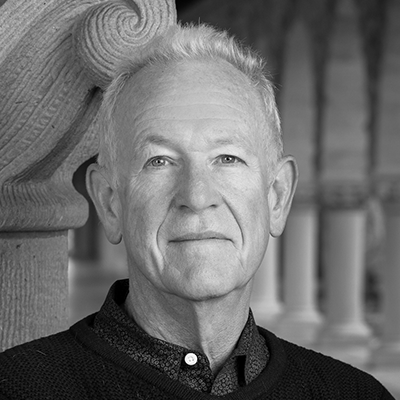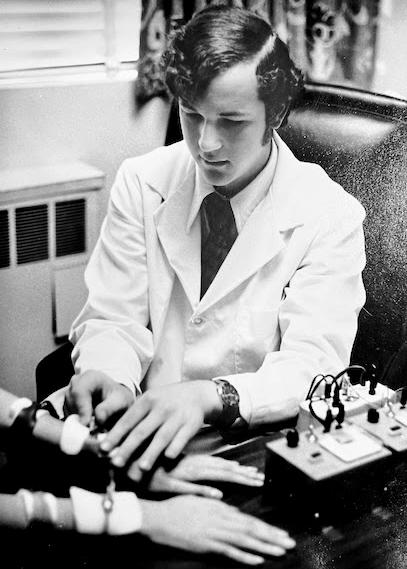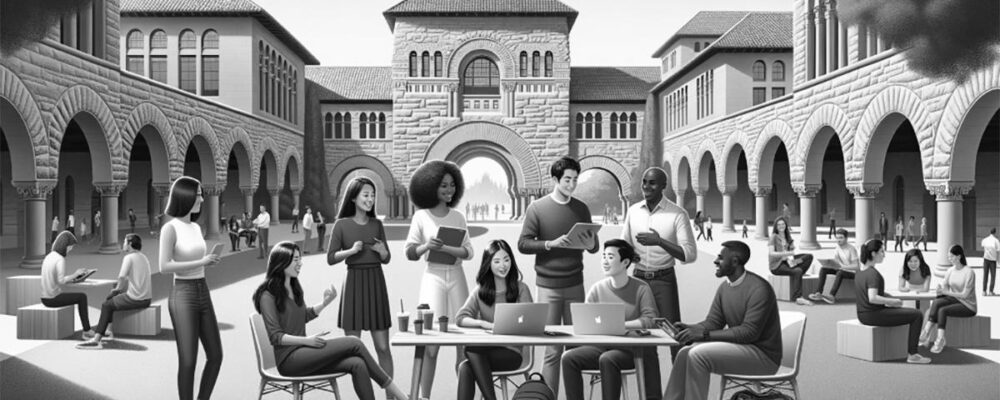Cystic fibrosis (CF) is a common hereditary disease, which results in shortened lifespans and symptoms that can make daily life an intense struggle. It is a multi-organ disease caused by a mutation in a gene that controls how salt and water are transported across cells lining many of the cavities of our body, including the lungs, intestines, pancreas, and reproductive organs. Due to mutations in the CFTR gene, people with CF produce very thick mucus in these body cavities. This leads to severe symptoms such as inability to absorb nutrients from food, difficulty digesting food, and difficulty fighting off respiratory tract infections.
People with CF often struggle to breathe and have persistent coughs with thick mucus, respiratory disease necessitating frequent hospitalization, poor growth, severe digestive problems, difficulty gaining weight, and infertility.
“Cystic fibrosis is the perfect disease to teach the entire picture of what a genetic disease is – from the story of how it was discovered to the development of symptomatic treatments to the discovery of the fundamental underlying causes and the identification of the gene, which is one of the first disease genes to be identified and cloned,” said Ron Kopito, professor of biology in the School of Humanities and Sciences, who began teaching BIO 25Q: Cystic Fibrosis: From Medical Conundrum to Precision Medicine Success Story in 1998.
CF has been a constant presence in Kopito’s life. His father was a scientist who studied the disease in the 1960s, and the younger Kopito spent his teenage years working in a laboratory doing diagnostic testing for cystic fibrosis.
“,”additional”:{“file_info”:{“file_name”:”IMG_3741-teen-Kopito.jpg”,”size_readable”:”148.9 KB”,”size_bytes”:152519,”width”:407,”height”:569,”modified_readable”:”Apr 9, 2025 1:16 PM”,”modified_unix”:1744229797},”varieties”:[{“id”:”168316:v1″,”type”:”image_variety”,”type_name”:”Image Variety”,”version”:””,”name”:”100w”,”short_name”:”100w”,”status”:{“id”:16,”code”:”live”,”name”:”Live”},”created”:{“date”:”1969-12-31T16:00:00-08:00″,”user_id”:null},”updated”:{“date”:”1969-12-31T16:00:00-08:00″,”user_id”:null},”published”:{“date”:null,”user_id”:null},”status_changed”:{“date”:”1969-12-31T16:00:00-08:00″,”user_id”:null},”urls”:[“https://news.stanford.edu/__data/assets/image/0025/168316/varieties/100w.jpg”],”url”:”https://news.stanford.edu/__data/assets/image/0025/168316/varieties/100w.jpg”,”attributes”:{“variety_type”:”resize”,”filename”:”100w.jpg”,”name”:”100w”,”title”:”Young Kopito”,”caption”:”Credit: Courtesy Ron Kopito”,”variety_size”:4181,”variety_height”:100,”variety_width”:100,”alt”:”Ron Kopito in the 1970s doing a sweat test on a patient at Boston Children’s Hospital.”,”dimension_min”:0,”dimension”:100,”height”:0,”width”:0,”constrain”:”centre_weighted_square”},”metadata”:null,”contents”:””,”additional”:{}},{“id”:”168316:v2″,”type”:”image_variety”,”type_name”:”Image Variety”,”version”:””,”name”:”150w”,”short_name”:”150w”,”status”:{“id”:16,”code”:”live”,”name”:”Live”},”created”:{“date”:”1969-12-31T16:00:00-08:00″,”user_id”:null},”updated”:{“date”:”1969-12-31T16:00:00-08:00″,”user_id”:null},”published”:{“date”:null,”user_id”:null},”status_changed”:{“date”:”1969-12-31T16:00:00-08:00″,”user_id”:null},”urls”:[“https://news.stanford.edu/__data/assets/image/0025/168316/varieties/150w.jpg”],”url”:”https://news.stanford.edu/__data/assets/image/0025/168316/varieties/150w.jpg”,”attributes”:{“variety_type”:”resize”,”filename”:”150w.jpg”,”name”:”150w”,”title”:”Young Kopito”,”caption”:”Credit: Courtesy Ron Kopito”,”variety_size”:7094,”variety_height”:150,”variety_width”:150,”alt”:”Ron Kopito in the 1970s doing a sweat test on a patient at Boston Children’s Hospital.”,”dimension_min”:0,”dimension”:150,”height”:0,”width”:0,”constrain”:”centre_weighted_square”},”metadata”:null,”contents”:””,”additional”:{}},{“id”:”168316:v3″,”type”:”image_variety”,”type_name”:”Image Variety”,”version”:””,”name”:”200w”,”short_name”:”200w”,”status”:{“id”:16,”code”:”live”,”name”:”Live”},”created”:{“date”:”1969-12-31T16:00:00-08:00″,”user_id”:null},”updated”:{“date”:”1969-12-31T16:00:00-08:00″,”user_id”:null},”published”:{“date”:null,”user_id”:null},”status_changed”:{“date”:”1969-12-31T16:00:00-08:00″,”user_id”:null},”urls”:[“https://news.stanford.edu/__data/assets/image/0025/168316/varieties/200w.jpg”],”url”:”https://news.stanford.edu/__data/assets/image/0025/168316/varieties/200w.jpg”,”attributes”:{“variety_type”:”resize”,”filename”:”200w.jpg”,”name”:”200w”,”title”:”Young Kopito”,”caption”:”Credit: Courtesy Ron Kopito”,”variety_size”:14195,”variety_height”:280,”variety_width”:200,”alt”:”Ron Kopito in the 1970s doing a sweat test on a patient at Boston Children’s Hospital.”,”dimension_min”:0,”dimension”:0,”height”:200,”width”:200,”constrain”:”width”},”metadata”:null,”contents”:””,”additional”:{}},{“id”:”168316:v4″,”type”:”image_variety”,”type_name”:”Image Variety”,”version”:””,”name”:”300w”,”short_name”:”300w”,”status”:{“id”:16,”code”:”live”,”name”:”Live”},”created”:{“date”:”1969-12-31T16:00:00-08:00″,”user_id”:null},”updated”:{“date”:”1969-12-31T16:00:00-08:00″,”user_id”:null},”published”:{“date”:null,”user_id”:null},”status_changed”:{“date”:”1969-12-31T16:00:00-08:00″,”user_id”:null},”urls”:[“https://news.stanford.edu/__data/assets/image/0025/168316/varieties/300w.jpg”],”url”:”https://news.stanford.edu/__data/assets/image/0025/168316/varieties/300w.jpg”,”attributes”:{“variety_type”:”resize”,”filename”:”300w.jpg”,”name”:”300w”,”title”:”Young Kopito”,”caption”:”Credit: Courtesy Ron Kopito”,”variety_size”:14195,”variety_height”:280,”variety_width”:200,”alt”:”Ron Kopito in the 1970s doing a sweat test on a patient at Boston Children’s Hospital.”,”dimension_min”:0,”dimension”:0,”height”:300,”width”:200,”constrain”:”width”},”metadata”:null,”contents”:””,”additional”:{}},{“id”:”168316:v5″,”type”:”image_variety”,”type_name”:”Image Variety”,”version”:””,”name”:”345w”,”short_name”:”345w”,”status”:{“id”:16,”code”:”live”,”name”:”Live”},”created”:{“date”:”1969-12-31T16:00:00-08:00″,”user_id”:null},”updated”:{“date”:”1969-12-31T16:00:00-08:00″,”user_id”:null},”published”:{“date”:null,”user_id”:null},”status_changed”:{“date”:”1969-12-31T16:00:00-08:00″,”user_id”:null},”urls”:[“https://news.stanford.edu/__data/assets/image/0025/168316/varieties/345w.jpg”],”url”:”https://news.stanford.edu/__data/assets/image/0025/168316/varieties/345w.jpg”,”attributes”:{“variety_type”:”resize”,”filename”:”345w.jpg”,”name”:”345w”,”title”:”Young Kopito”,”caption”:”Credit: Courtesy Ron Kopito”,”variety_size”:32528,”variety_height”:482,”variety_width”:345,”alt”:”Ron Kopito in the 1970s doing a sweat test on a patient at Boston Children’s Hospital.”,”dimension_min”:0,”dimension”:0,”height”:555,”width”:345,”constrain”:”width”},”metadata”:null,”contents”:””,”additional”:{}},{“id”:”168316:v6″,”type”:”image_variety”,”type_name”:”Image Variety”,”version”:””,”name”:”375w”,”short_name”:”375w”,”status”:{“id”:16,”code”:”live”,”name”:”Live”},”created”:{“date”:”1969-12-31T16:00:00-08:00″,”user_id”:null},”updated”:{“date”:”1969-12-31T16:00:00-08:00″,”user_id”:null},”published”:{“date”:null,”user_id”:null},”status_changed”:{“date”:”1969-12-31T16:00:00-08:00″,”user_id”:null},”urls”:[“https://news.stanford.edu/__data/assets/image/0025/168316/varieties/375w.jpg”],”url”:”https://news.stanford.edu/__data/assets/image/0025/168316/varieties/375w.jpg”,”attributes”:{“variety_type”:”resize”,”filename”:”375w.jpg”,”name”:”375w”,”title”:”Young Kopito”,”caption”:”Credit: Courtesy Ron Kopito”,”variety_size”:36562,”variety_height”:524,”variety_width”:375,”alt”:”Ron Kopito in the 1970s doing a sweat test on a patient at Boston Children’s Hospital.”,”dimension_min”:0,”dimension”:0,”height”:200,”width”:375,”constrain”:”width”},”metadata”:null,”contents”:””,”additional”:{}},{“id”:”168316:v7″,”type”:”image_variety”,”type_name”:”Image Variety”,”version”:””,”name”:”400w”,”short_name”:”400w”,”status”:{“id”:16,”code”:”live”,”name”:”Live”},”created”:{“date”:”1969-12-31T16:00:00-08:00″,”user_id”:null},”updated”:{“date”:”1969-12-31T16:00:00-08:00″,”user_id”:null},”published”:{“date”:null,”user_id”:null},”status_changed”:{“date”:”1969-12-31T16:00:00-08:00″,”user_id”:null},”urls”:[“https://news.stanford.edu/__data/assets/image/0025/168316/varieties/400w.jpg”],”url”:”https://news.stanford.edu/__data/assets/image/0025/168316/varieties/400w.jpg”,”attributes”:{“variety_type”:”resize”,”filename”:”400w.jpg”,”name”:”400w”,”title”:”Young Kopito”,”caption”:”Credit: Courtesy Ron Kopito”,”variety_size”:39944,”variety_height”:559,”variety_width”:400,”alt”:”Ron Kopito in the 1970s doing a sweat test on a patient at Boston Children’s Hospital.”,”dimension_min”:0,”dimension”:0,”height”:100,”width”:400,”constrain”:”width”},”metadata”:null,”contents”:””,”additional”:{}},{“id”:”168316:v8″,”type”:”image_variety”,”type_name”:”Image Variety”,”version”:””,”name”:”555w”,”short_name”:”555w”,”status”:{“id”:16,”code”:”live”,”name”:”Live”},”created”:{“date”:”1969-12-31T16:00:00-08:00″,”user_id”:null},”updated”:{“date”:”1969-12-31T16:00:00-08:00″,”user_id”:null},”published”:{“date”:null,”user_id”:null},”status_changed”:{“date”:”1969-12-31T16:00:00-08:00″,”user_id”:null},”urls”:[“https://news.stanford.edu/__data/assets/image/0025/168316/varieties/555w.jpg”],”url”:”https://news.stanford.edu/__data/assets/image/0025/168316/varieties/555w.jpg”,”attributes”:{“variety_type”:”resize”,”filename”:”555w.jpg”,”name”:”555w”,”title”:”Young Kopito”,”caption”:”Credit: Courtesy Ron Kopito”,”variety_size”:68319,”variety_height”:776,”variety_width”:555,”alt”:”Ron Kopito in the 1970s doing a sweat test on a patient at Boston Children’s Hospital.”,”dimension_min”:0,”dimension”:0,”height”:0,”width”:555,”constrain”:”width”},”metadata”:null,”contents”:””,”additional”:{}},{“id”:”168316:v9″,”type”:”image_variety”,”type_name”:”Image Variety”,”version”:””,”name”:”600w”,”short_name”:”600w”,”status”:{“id”:16,”code”:”live”,”name”:”Live”},”created”:{“date”:”1969-12-31T16:00:00-08:00″,”user_id”:null},”updated”:{“date”:”1969-12-31T16:00:00-08:00″,”user_id”:null},”published”:{“date”:null,”user_id”:null},”status_changed”:{“date”:”1969-12-31T16:00:00-08:00″,”user_id”:null},”urls”:[“https://news.stanford.edu/__data/assets/image/0025/168316/varieties/600w.jpg”],”url”:”https://news.stanford.edu/__data/assets/image/0025/168316/varieties/600w.jpg”,”attributes”:{“variety_type”:”resize”,”filename”:”600w.jpg”,”name”:”600w”,”title”:”Young Kopito”,”caption”:”Credit: Courtesy Ron Kopito”,”variety_size”:76966,”variety_height”:839,”variety_width”:600,”alt”:”Ron Kopito in the 1970s doing a sweat test on a patient at Boston Children’s Hospital.”,”dimension_min”:0,”dimension”:0,”height”:0,”width”:600,”constrain”:”width”},”metadata”:null,”contents”:””,”additional”:{}},{“id”:”168316:v10″,”type”:”image_variety”,”type_name”:”Image Variety”,”version”:””,”name”:”690w”,”short_name”:”690w”,”status”:{“id”:16,”code”:”live”,”name”:”Live”},”created”:{“date”:”1969-12-31T16:00:00-08:00″,”user_id”:null},”updated”:{“date”:”1969-12-31T16:00:00-08:00″,”user_id”:null},”published”:{“date”:null,”user_id”:null},”status_changed”:{“date”:”1969-12-31T16:00:00-08:00″,”user_id”:null},”urls”:[“https://news.stanford.edu/__data/assets/image/0025/168316/varieties/690w.jpg”],”url”:”https://news.stanford.edu/__data/assets/image/0025/168316/varieties/690w.jpg”,”attributes”:{“variety_type”:”resize”,”filename”:”690w.jpg”,”name”:”690w”,”title”:”Young Kopito”,”caption”:”Credit: Courtesy Ron Kopito”,”variety_size”:97509,”variety_height”:965,”variety_width”:690,”alt”:”Ron Kopito in the 1970s doing a sweat test on a patient at Boston Children’s Hospital.”,”dimension_min”:0,”dimension”:0,”height”:0,”width”:690,”constrain”:”width”},”metadata”:null,”contents”:””,”additional”:{}},{“id”:”168316:v11″,”type”:”image_variety”,”type_name”:”Image Variety”,”version”:””,”name”:”705w”,”short_name”:”705w”,”status”:{“id”:16,”code”:”live”,”name”:”Live”},”created”:{“date”:”1969-12-31T16:00:00-08:00″,”user_id”:null},”updated”:{“date”:”1969-12-31T16:00:00-08:00″,”user_id”:null},”published”:{“date”:null,”user_id”:null},”status_changed”:{“date”:”1969-12-31T16:00:00-08:00″,”user_id”:null},”urls”:[“https://news.stanford.edu/__data/assets/image/0025/168316/varieties/705w.jpg”],”url”:”https://news.stanford.edu/__data/assets/image/0025/168316/varieties/705w.jpg”,”attributes”:{“variety_type”:”resize”,”filename”:”705w.jpg”,”name”:”705w”,”title”:”Young Kopito”,”caption”:”Credit: Courtesy Ron Kopito”,”variety_size”:101201,”variety_height”:986,”variety_width”:705,”alt”:”Ron Kopito in the 1970s doing a sweat test on a patient at Boston Children’s Hospital.”,”dimension_min”:0,”dimension”:0,”height”:0,”width”:705,”constrain”:”width”},”metadata”:null,”contents”:””,”additional”:{}},{“id”:”168316:v12″,”type”:”image_variety”,”type_name”:”Image Variety”,”version”:””,”name”:”750w”,”short_name”:”750w”,”status”:{“id”:16,”code”:”live”,”name”:”Live”},”created”:{“date”:”1969-12-31T16:00:00-08:00″,”user_id”:null},”updated”:{“date”:”1969-12-31T16:00:00-08:00″,”user_id”:null},”published”:{“date”:null,”user_id”:null},”status_changed”:{“date”:”1969-12-31T16:00:00-08:00″,”user_id”:null},”urls”:[“https://news.stanford.edu/__data/assets/image/0025/168316/varieties/750w.jpg”],”url”:”https://news.stanford.edu/__data/assets/image/0025/168316/varieties/750w.jpg”,”attributes”:{“variety_type”:”resize”,”filename”:”750w.jpg”,”name”:”750w”,”title”:”Young Kopito”,”caption”:”Credit: Courtesy Ron Kopito”,”variety_size”:110934,”variety_height”:1049,”variety_width”:750,”alt”:”Ron Kopito in the 1970s doing a sweat test on a patient at Boston Children’s Hospital.”,”dimension_min”:0,”dimension”:0,”height”:0,”width”:750,”constrain”:”width”},”metadata”:null,”contents”:””,”additional”:{}},{“id”:”168316:v13″,”type”:”image_variety”,”type_name”:”Image Variety”,”version”:””,”name”:”795w”,”short_name”:”795w”,”status”:{“id”:16,”code”:”live”,”name”:”Live”},”created”:{“date”:”1969-12-31T16:00:00-08:00″,”user_id”:null},”updated”:{“date”:”1969-12-31T16:00:00-08:00″,”user_id”:null},”published”:{“date”:null,”user_id”:null},”status_changed”:{“date”:”1969-12-31T16:00:00-08:00″,”user_id”:null},”urls”:[“https://news.stanford.edu/__data/assets/image/0025/168316/varieties/795w.jpg”],”url”:”https://news.stanford.edu/__data/assets/image/0025/168316/varieties/795w.jpg”,”attributes”:{“variety_type”:”resize”,”filename”:”795w.jpg”,”name”:”795w”,”title”:”Young Kopito”,”caption”:”Credit: Courtesy Ron Kopito”,”variety_size”:121685,”variety_height”:1111,”variety_width”:795,”alt”:”Ron Kopito in the 1970s doing a sweat test on a patient at Boston Children’s Hospital.”,”dimension_min”:0,”dimension”:0,”height”:0,”width”:795,”constrain”:”width”},”metadata”:null,”contents”:””,”additional”:{}},{“id”:”168316:v14″,”type”:”image_variety”,”type_name”:”Image Variety”,”version”:””,”name”:”960w”,”short_name”:”960w”,”status”:{“id”:16,”code”:”live”,”name”:”Live”},”created”:{“date”:”1969-12-31T16:00:00-08:00″,”user_id”:null},”updated”:{“date”:”1969-12-31T16:00:00-08:00″,”user_id”:null},”published”:{“date”:null,”user_id”:null},”status_changed”:{“date”:”1969-12-31T16:00:00-08:00″,”user_id”:null},”urls”:[“https://news.stanford.edu/__data/assets/image/0025/168316/varieties/960w.jpg”],”url”:”https://news.stanford.edu/__data/assets/image/0025/168316/varieties/960w.jpg”,”attributes”:{“variety_type”:”resize”,”filename”:”960w.jpg”,”name”:”960w”,”title”:”Young Kopito”,”caption”:”Credit: Courtesy Ron Kopito”,”variety_size”:166294,”variety_height”:1342,”variety_width”:960,”alt”:”Ron Kopito in the 1970s doing a sweat test on a patient at Boston Children’s Hospital.”,”dimension_min”:0,”dimension”:0,”height”:0,”width”:960,”constrain”:”width”},”metadata”:null,”contents”:””,”additional”:{}},{“id”:”168316:v15″,”type”:”image_variety”,”type_name”:”Image Variety”,”version”:””,”name”:”1024w”,”short_name”:”1024w”,”status”:{“id”:16,”code”:”live”,”name”:”Live”},”created”:{“date”:”1969-12-31T16:00:00-08:00″,”user_id”:null},”updated”:{“date”:”1969-12-31T16:00:00-08:00″,”user_id”:null},”published”:{“date”:null,”user_id”:null},”status_changed”:{“date”:”1969-12-31T16:00:00-08:00″,”user_id”:null},”urls”:[“https://news.stanford.edu/__data/assets/image/0025/168316/varieties/1024w.jpg”],”url”:”https://news.stanford.edu/__data/assets/image/0025/168316/varieties/1024w.jpg”,”attributes”:{“variety_type”:”resize”,”filename”:”1024w.jpg”,”name”:”1024w”,”title”:”Young Kopito”,”caption”:”Credit: Courtesy Ron Kopito”,”variety_size”:185193,”variety_height”:1432,”variety_width”:1024,”alt”:”Ron Kopito in the 1970s doing a sweat test on a patient at Boston Children’s Hospital.”,”dimension_min”:0,”dimension”:0,”height”:0,”width”:1024,”constrain”:”width”},”metadata”:null,”contents”:””,”additional”:{}},{“id”:”168316:v16″,”type”:”image_variety”,”type_name”:”Image Variety”,”version”:””,”name”:”1110w”,”short_name”:”1110w”,”status”:{“id”:16,”code”:”live”,”name”:”Live”},”created”:{“date”:”1969-12-31T16:00:00-08:00″,”user_id”:null},”updated”:{“date”:”1969-12-31T16:00:00-08:00″,”user_id”:null},”published”:{“date”:null,”user_id”:null},”status_changed”:{“date”:”1969-12-31T16:00:00-08:00″,”user_id”:null},”urls”:[“https://news.stanford.edu/__data/assets/image/0025/168316/varieties/1110w.jpg”],”url”:”https://news.stanford.edu/__data/assets/image/0025/168316/varieties/1110w.jpg”,”attributes”:{“variety_type”:”resize”,”filename”:”1110w.jpg”,”name”:”1110w”,”title”:”Young Kopito”,”caption”:”Credit: Courtesy Ron Kopito”,”variety_size”:211664,”variety_height”:1552,”variety_width”:1110,”alt”:”Ron Kopito in the 1970s doing a sweat test on a patient at Boston Children’s Hospital.”,”dimension_min”:0,”dimension”:0,”height”:0,”width”:1110,”constrain”:”width”},”metadata”:null,”contents”:””,”additional”:{}},{“id”:”168316:v17″,”type”:”image_variety”,”type_name”:”Image Variety”,”version”:””,”name”:”1410w”,”short_name”:”1410w”,”status”:{“id”:16,”code”:”live”,”name”:”Live”},”created”:{“date”:”1969-12-31T16:00:00-08:00″,”user_id”:null},”updated”:{“date”:”1969-12-31T16:00:00-08:00″,”user_id”:null},”published”:{“date”:null,”user_id”:null},”status_changed”:{“date”:”1969-12-31T16:00:00-08:00″,”user_id”:null},”urls”:[“https://news.stanford.edu/__data/assets/image/0025/168316/varieties/1410w.jpg”],”url”:”https://news.stanford.edu/__data/assets/image/0025/168316/varieties/1410w.jpg”,”attributes”:{“variety_type”:”resize”,”filename”:”1410w.jpg”,”name”:”1410w”,”title”:”Young Kopito”,”caption”:”Credit: Courtesy Ron Kopito”,”variety_size”:314993,”variety_height”:1971,”variety_width”:1410,”alt”:”Ron Kopito in the 1970s doing a sweat test on a patient at Boston Children’s Hospital.”,”dimension_min”:0,”dimension”:0,”height”:0,”width”:1410,”constrain”:”width”},”metadata”:null,”contents”:””,”additional”:{}},{“id”:”168316:v18″,”type”:”image_variety”,”type_name”:”Image Variety”,”version”:””,”name”:”1500w”,”short_name”:”1500w”,”status”:{“id”:16,”code”:”live”,”name”:”Live”},”created”:{“date”:”1969-12-31T16:00:00-08:00″,”user_id”:null},”updated”:{“date”:”1969-12-31T16:00:00-08:00″,”user_id”:null},”published”:{“date”:null,”user_id”:null},”status_changed”:{“date”:”1969-12-31T16:00:00-08:00″,”user_id”:null},”urls”:[“https://news.stanford.edu/__data/assets/image/0025/168316/varieties/1500w.jpg”],”url”:”https://news.stanford.edu/__data/assets/image/0025/168316/varieties/1500w.jpg”,”attributes”:{“variety_type”:”resize”,”filename”:”1500w.jpg”,”name”:”1500w”,”title”:”Young Kopito”,”caption”:”Credit: Courtesy Ron Kopito”,”variety_size”:347155,”variety_height”:2097,”variety_width”:1500,”alt”:”Ron Kopito in the 1970s doing a sweat test on a patient at Boston Children’s Hospital.”,”dimension_min”:0,”dimension”:0,”height”:0,”width”:1500,”constrain”:”width”},”metadata”:null,”contents”:””,”additional”:{}}],”exif”:{“image”:{“ImageHeight”:569,”ImageWidth”:407,”Make”:”Apple”,”Model”:”iPhone 13 Pro”,”ModifyDate”:”2025:04:09 13:16:00″,”Orientation”:0,”ResolutionUnit”:0,”Software”:”Adobe Photoshop 26.1 (Macintosh)”,”XResolution”:72,”YCbCrPositioning”:0,”YResolution”:72},”thumbnail”:{“Compression”:0,”ThumbnailLength”:7373,”ThumbnailOffset”:1186},”exif”:{“ApertureValue”:1,”BrightnessValue”:2,”ColorSpace”:0,”CreateDate”:”2024:01:21 17:41:04″,”DateTimeOriginal”:”2024:01:21 17:41:04″,”ExifImageHeight”:569,”ExifImageWidth”:407,”ExposureCompensation”:0,”ExposureMode”:0,”ExposureProgram”:0,”ExposureTime”:1,”Flash”:0,”FNumber”:1,”FocalLength”:5,”FocalLengthIn35mmFormat”:26,”ImageUniqueID”:”3adce3e5cd7cc7e90000000000000000″,”ISO”:125,”LensMake”:”iPhone 13 Pro back triple camera 5.7mm f/1.5″,”MeteringMode”:0,”SceneCaptureType”:0,”SensingMethod”:0,”ShutterSpeedValue”:1,”WhiteBalance”:0},”interoperability”:{“InteropIndex”:”R98 – DCF basic file (sRGB)”}}}}}”>
Ron Kopito in the 1970s doing a sweat test on a patient at Boston Children’s Hospital. | Courtesy Ron Kopito
But when Kopito started his postgraduate training, the tools were not yet available to solve the genetic riddle of CF. Instead, he pursued a career focused on answering the fundamental cell biological problem of how proteins are trafficked inside cells. But in 1989, as Kopito was just starting his lab at Stanford, the CF gene was identified. Furthermore, it was found that the most common CF-causing mutation impairs the trafficking of the protein that it encodes.
“It was the combination of pure serendipity and an attuned mind that inspired me to significantly focus my research on cystic fibrosis,” he said.
The course, like the disease it is named after, has evolved over time. It follows the historical progression of CF research, starting from the 1930s, when it was first described by physicians, to current times, when scientists have developed revolutionary treatments. Students read and discuss the most significant scientific papers on CF, some learning for the first time how to interpret scientific texts via the century-long journey of CF trials and triumphs.
A special aspect of this course are the guest lecturers. These include people who are living with CF, medical practitioners who work with CF patients, and scientists who have made major contributions to solving this enigmatic disease.
“I think the human dimension is often very neglected in the way we teach science,” said Kopito. “And so I felt it was equally important to understand CF, not just as a scientific problem but as a human problem.”
Early on in the course, students read autobiographies of people with CF. In the earlier decades, the students read The Power of Two: A Twin Triumph Over Cystic Fibrosis, a personal account of living with CF written by Isabel and Anabel Stenzel, identical twin sisters who graduated from Stanford in 1994. In 2023, Kopito began teaching another autobiography by Stanford graduate Mallory Smith, who died of complications of the disease in 2017.
Guest lecturers have enabled the course to keep pace with innovations in this space, giving glimpses of what it is like living with CF now. One such guest is Jacob Greene, ’21, a person with CF who was a student in this course in 2019. Now a medical student at the University of California, San Francisco, Greene took this course as a sophomore to understand the science behind the disease that influences his life. During discussions and presentations, he found that he enjoyed providing insight about his personal experiences and giving firsthand testimonials of how new treatments were working.
“The course balances those two identities of science and human experience in a way that is reflective of what it’s like to enter a career in medicine,” he said. Greene’s lecture comes early in the course, and that role is meaningful to him. “Over the last five years, I’ve treasured being able to be one of the first people to introduce the disease to the students,” he said.
What Greene appreciates most is how the course allows students to leave with the knowledge that many people with CF are living healthier and longer than ever before. This is due to a revolutionary development in 2019, when a drug called Trikafta was FDA-approved for the treatment of CF. Unlike previous drugs, Trikafta targets the mechanism underlying the disease at the protein level. It has even been hypothesized that, with Trikafta, some people with CF could have normal lifespans. This has changed the course of the disease, since in previous decades most patients would not survive beyond their 20s. “Many physicians who do not regularly treat patients with CF do not know about Trikafta. Thus, CF is still believed to primarily be a pediatric disease. Now, it is a disease that, increasingly, also affects older adults,” said Greene.
“It was like meeting the author of your favorite textbook,” said Artemis E. Xu, ’26, a student in the winter quarter course, about Quinton’s lecture. Xu was inspired to take this elective because she wanted to gain scientific insight into the disease that affects one of her closest friends. When meeting Quinton, she was struck by how science was, in the end, often inspired and pushed through by relatable motivations. “He really started looking into it because he fell in love with a young woman and wanted to be responsible; he wanted to know how long his condition would allow him to live with her,” said Xu.
The course also delves into the future of CF and touches on the costs of drugs and treatment. “There are a lot of interesting perspectives on financing this expensive drug and the role that pharmaceutical companies play,” said Xu.
Many students from the course have been inspired by it to follow a career in medicine. “I want to go to medical school, and this course has made me very interested in pulmonology,” said Colin Sang-Zen Liu, a sophomore biology major who also took the course last quarter.
Even for Celeste Riepe, the teaching assistant for the course who is a CF researcher in Kopito’s lab, this course reinforces the personal realities of this disease. “It has enabled me to take a step back and think more about what it’s like living with the disease rather than just hyper-focusing on how the specific molecules interact.”
For others, the course highlights how it takes a village to solve scientific problems. “It’s helped me see how science builds upon itself, like a collective group effort over many, many decades,” said Xu.
Kopito’s main goal for the course has been for students to leave it with a deeper understanding of science and the realization that, beyond jargon, scientific discovery is based on logic. Open to both STEM and non-STEM majors, in recent years the class has seen a rise in the number of humanities major students. “For my STEM students, I hope that they really take away something inspirational that will guide their own careers,” he said. “And for my non-STEM students, I hope they remember how, fundamentally, everything in science is based on simple logic and that this will help them make informed decisions about medical and scientific issues, whether they’re at the voting booth or involved in policy.”
Across 27 years of teaching the course, Kopito says the biggest reward is seeing students get excited about science and understanding things that they didn’t think they could. Watching his students answer a difficult question about CF mechanism correctly and confidently puts a smile on his face. “This thrill of having imparted an understanding is why I teach this course,” he said.
Having students who never considered science as a profession end up in medicine or research is another huge win. “It’s always a pleasure to see people’s lives transformed,” Kopito recalled fondly. “I think the class has a big impact on everybody who takes it.”







